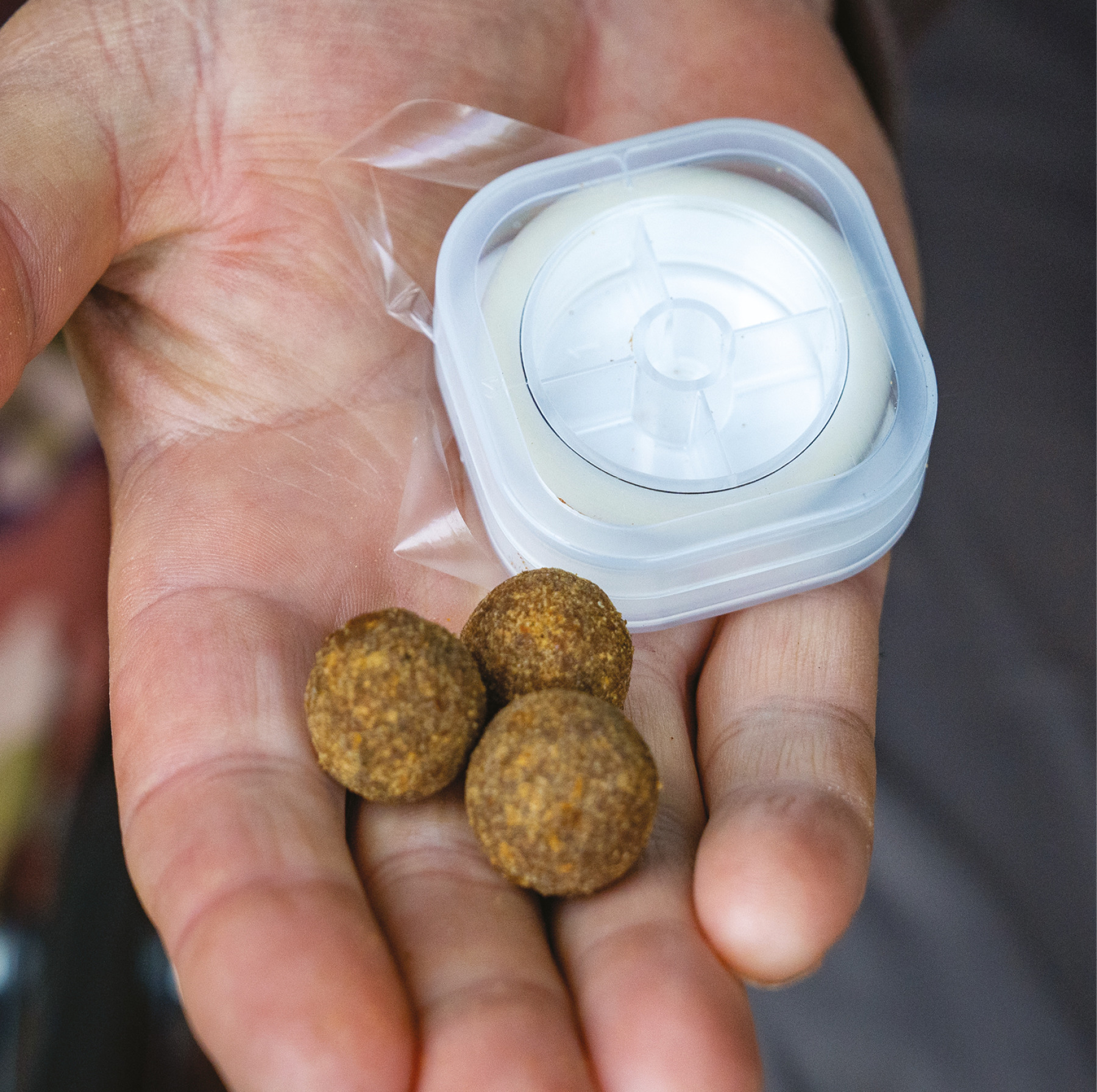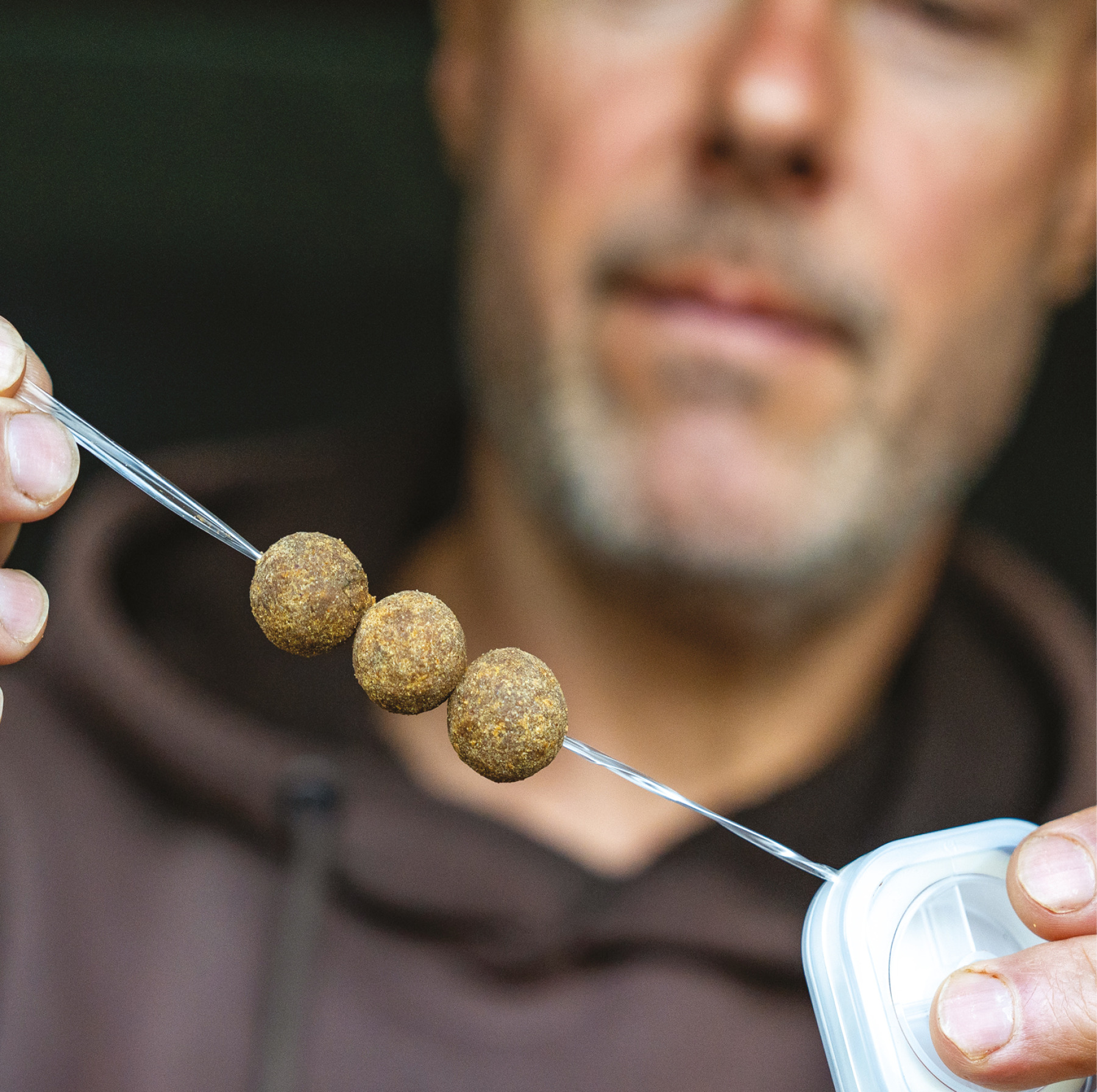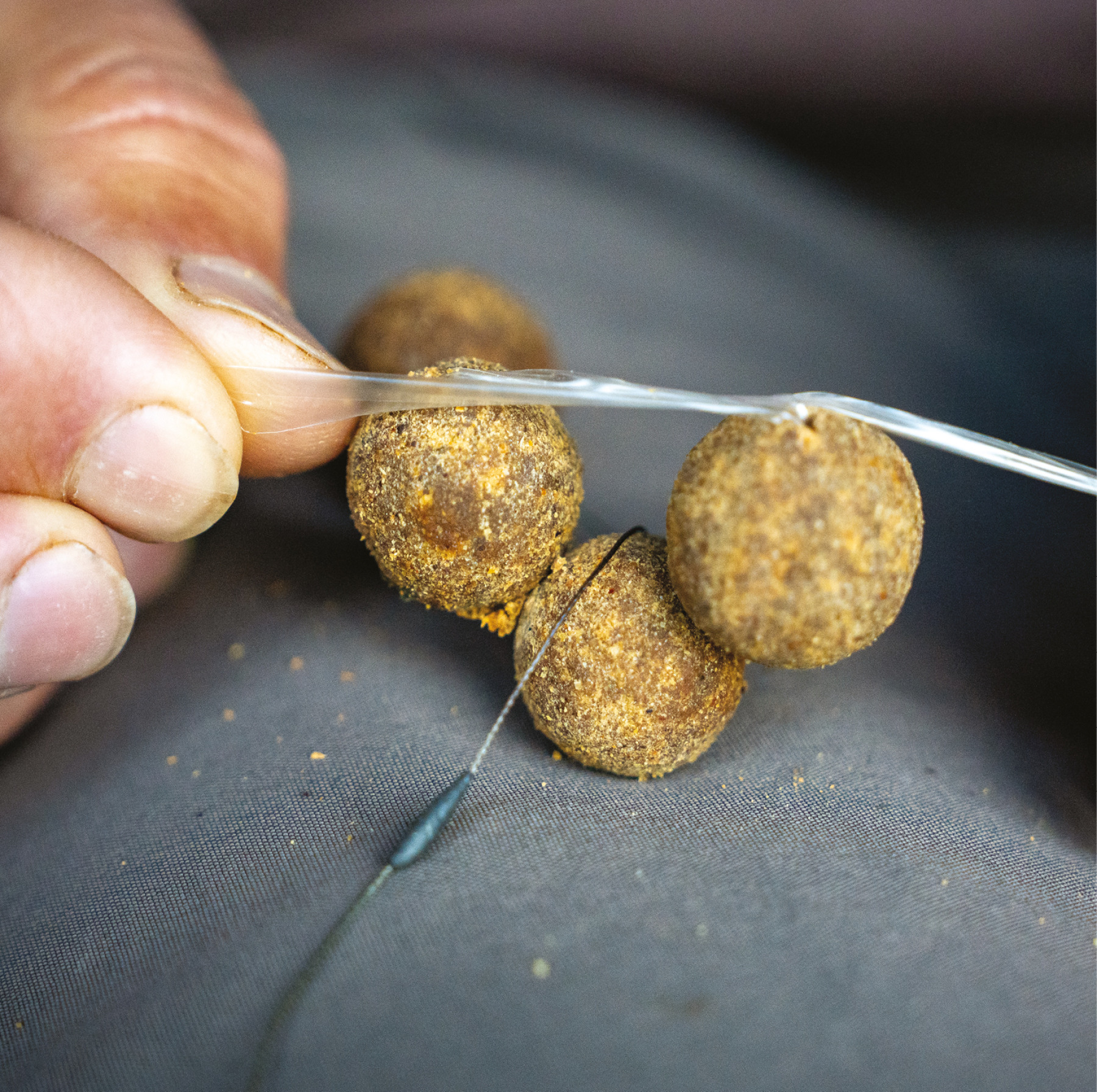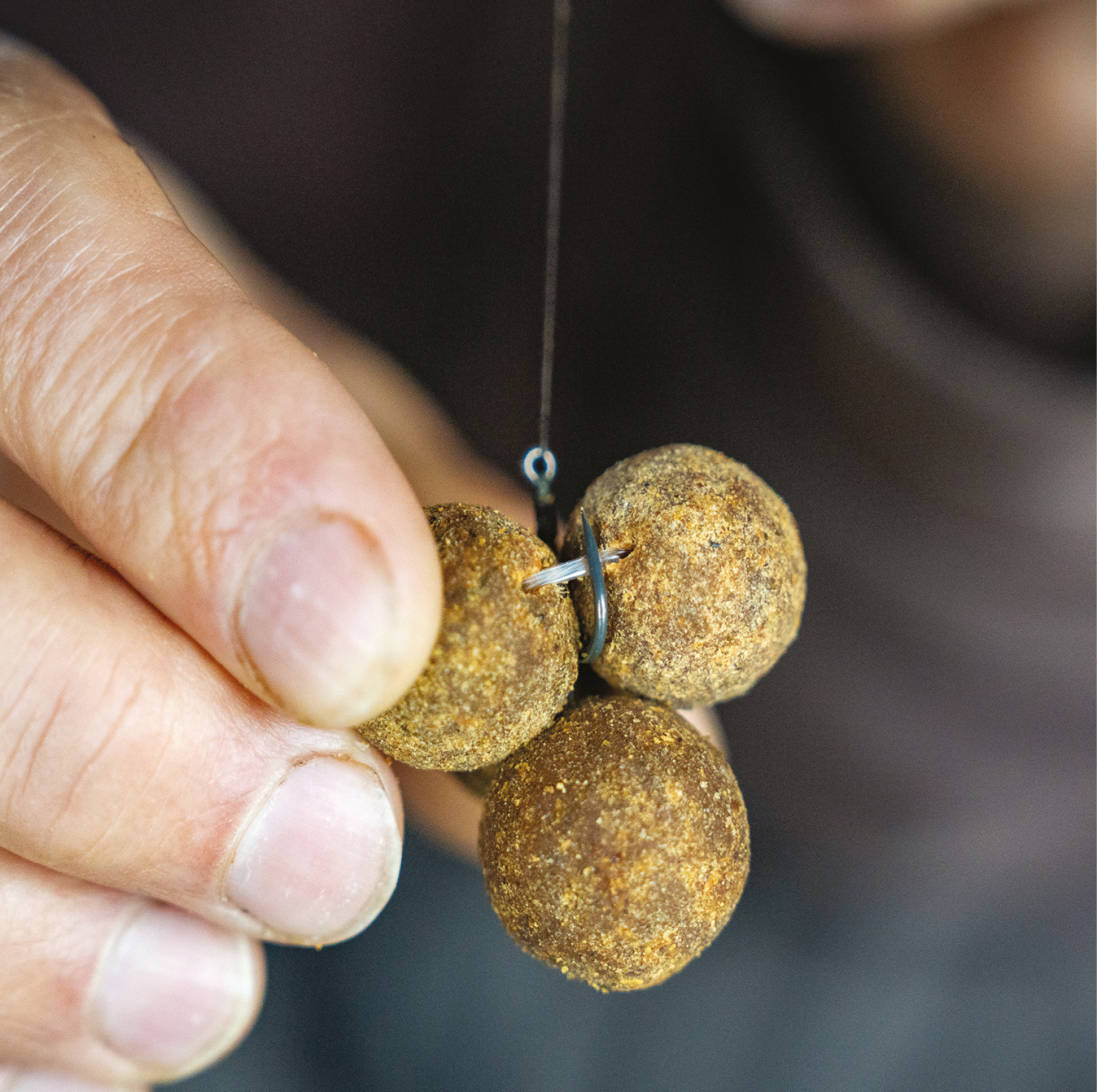The Bermuda Triangle
Both the rig and method are as basic as it comes, but the results they yield together are nothing short of exceptional...
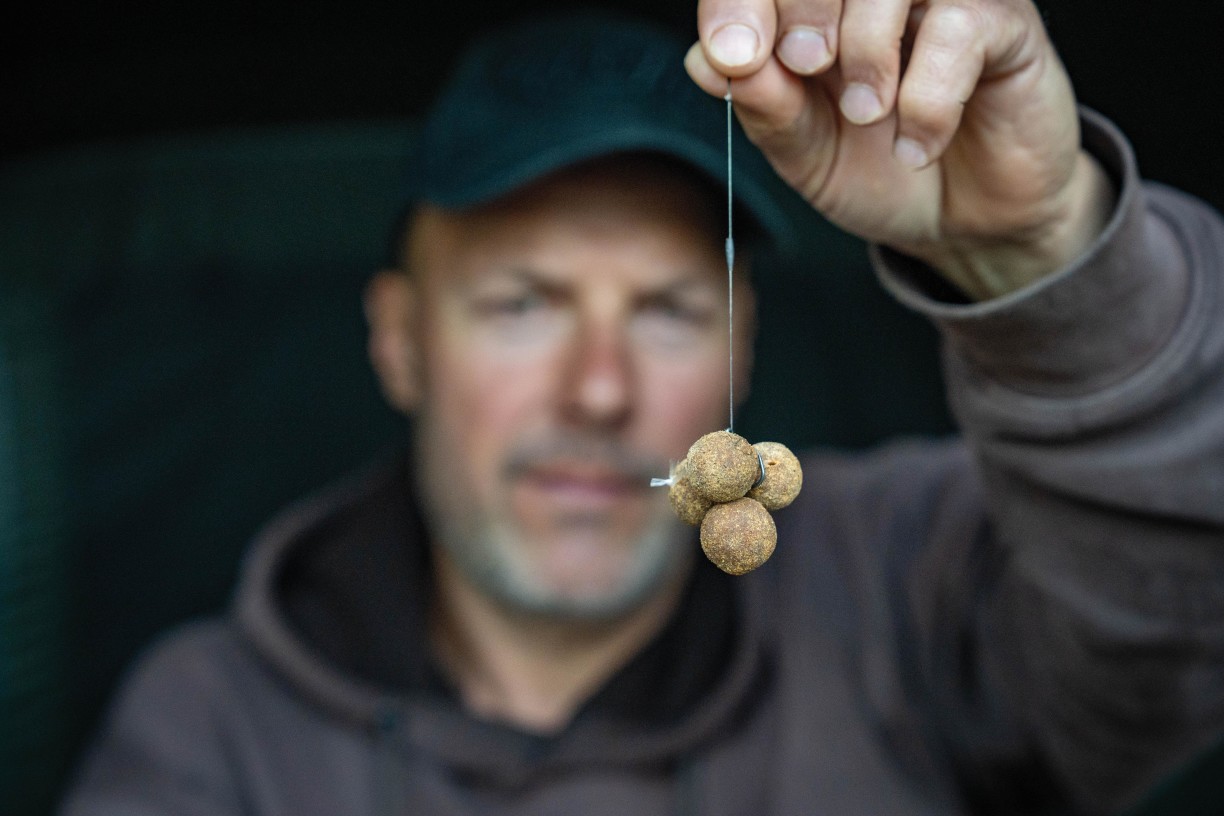
Why do you love this combination so much?
(1) It’s simple. (2) No one’s using it. (3) Because I use a large, heavy hookbait, when that’s blown out by the carp, the weight acts as a hammer on the hook point, really driving it home.
“It was Terry Hearn who first showed me the circle stringer (i.e. the Bermuda Triangle!) back in 1996/7, and even after all these years it’s still something I don’t see anyone else using yet it offers so many advantages. It masks the hook point and is completely anti-tangle. The rig is totally orthodox, with no resetting boom, and because there are only two components to the rig—a hook and a hooklink—when a fish takes that into its mouth it feels completely different to the usual bulky, metallic contraption they are used to picking up.
“And let’s remember, in this day and age, a heavy boilie laying on the lakebed represents no significant danger or fret to a carp—it’s just a piece of food. After so many years of putting some sort of flag on top of our hookbait through buoyancy, colour, flavour saturation or very often all three, to go back to just a boilie laying on the bottom is so different—and ultimately effective.”
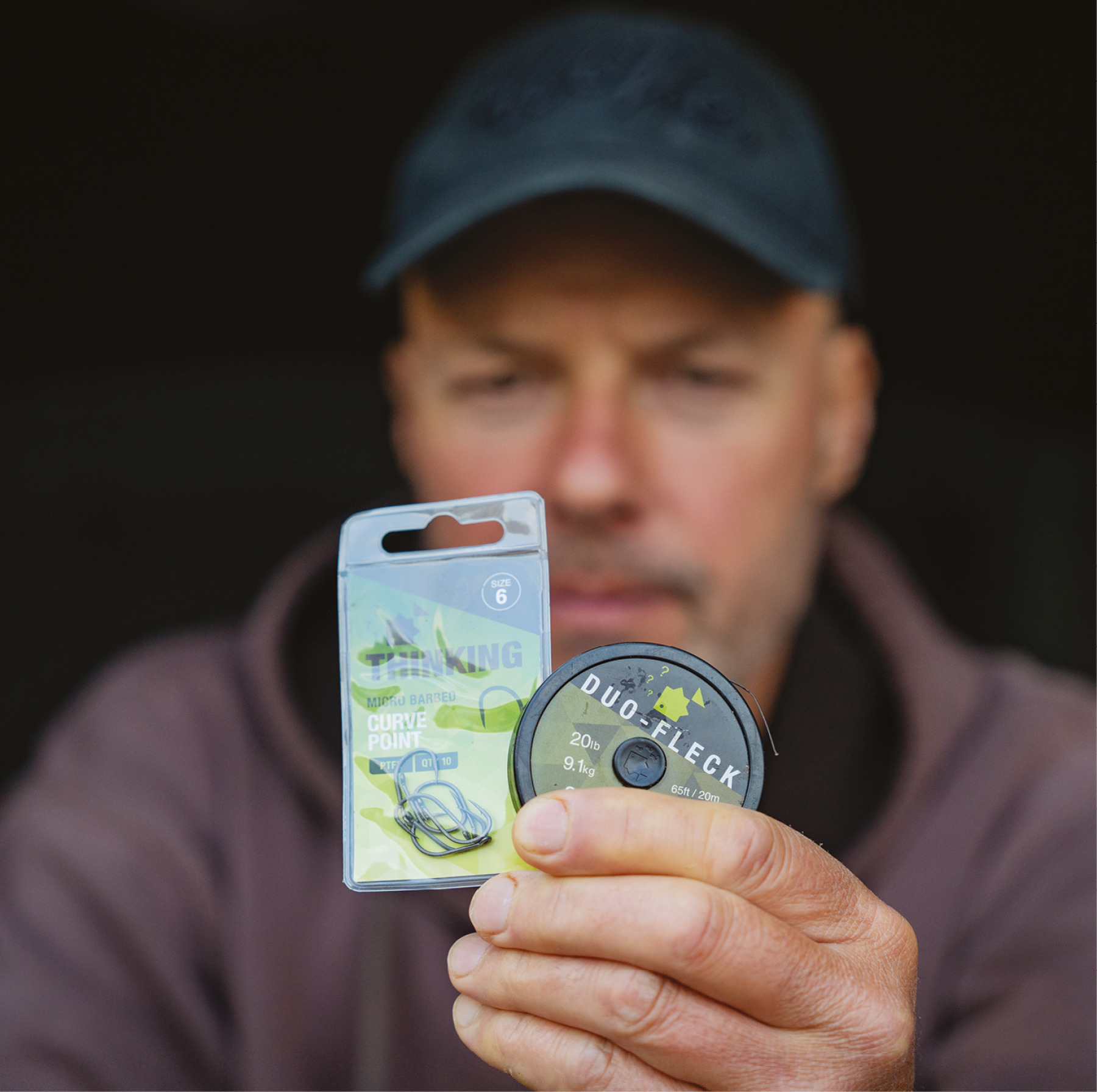
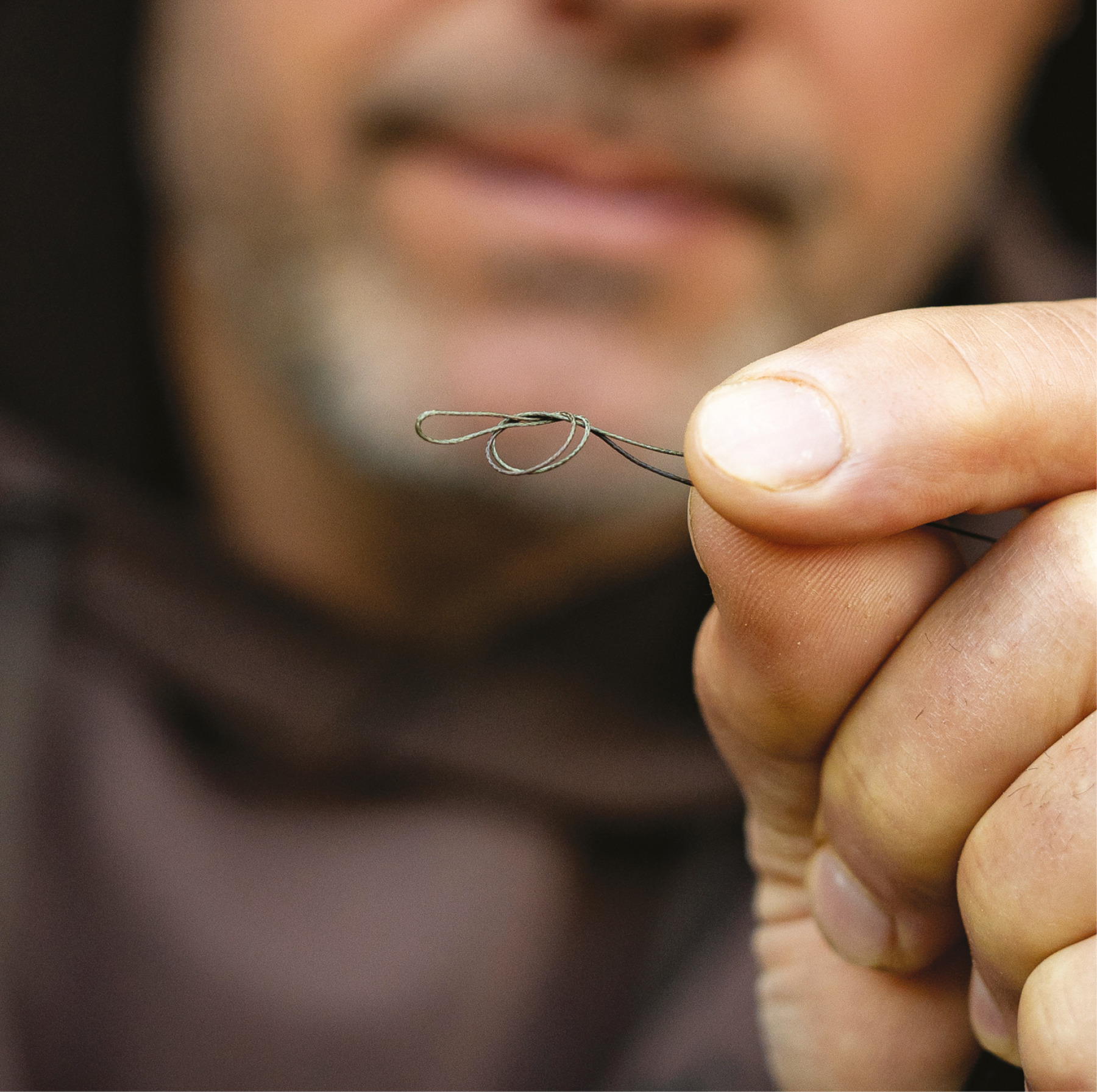
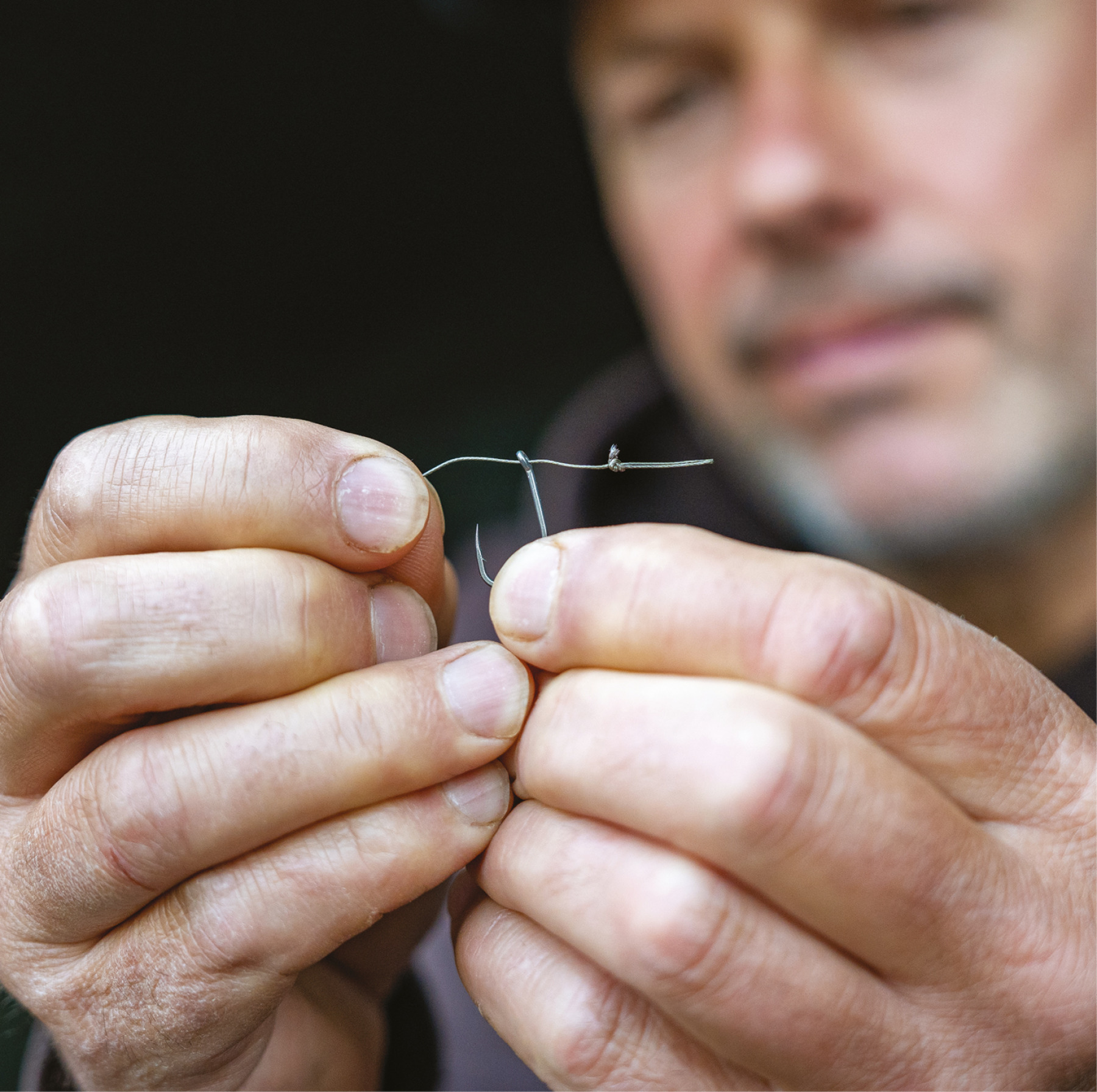
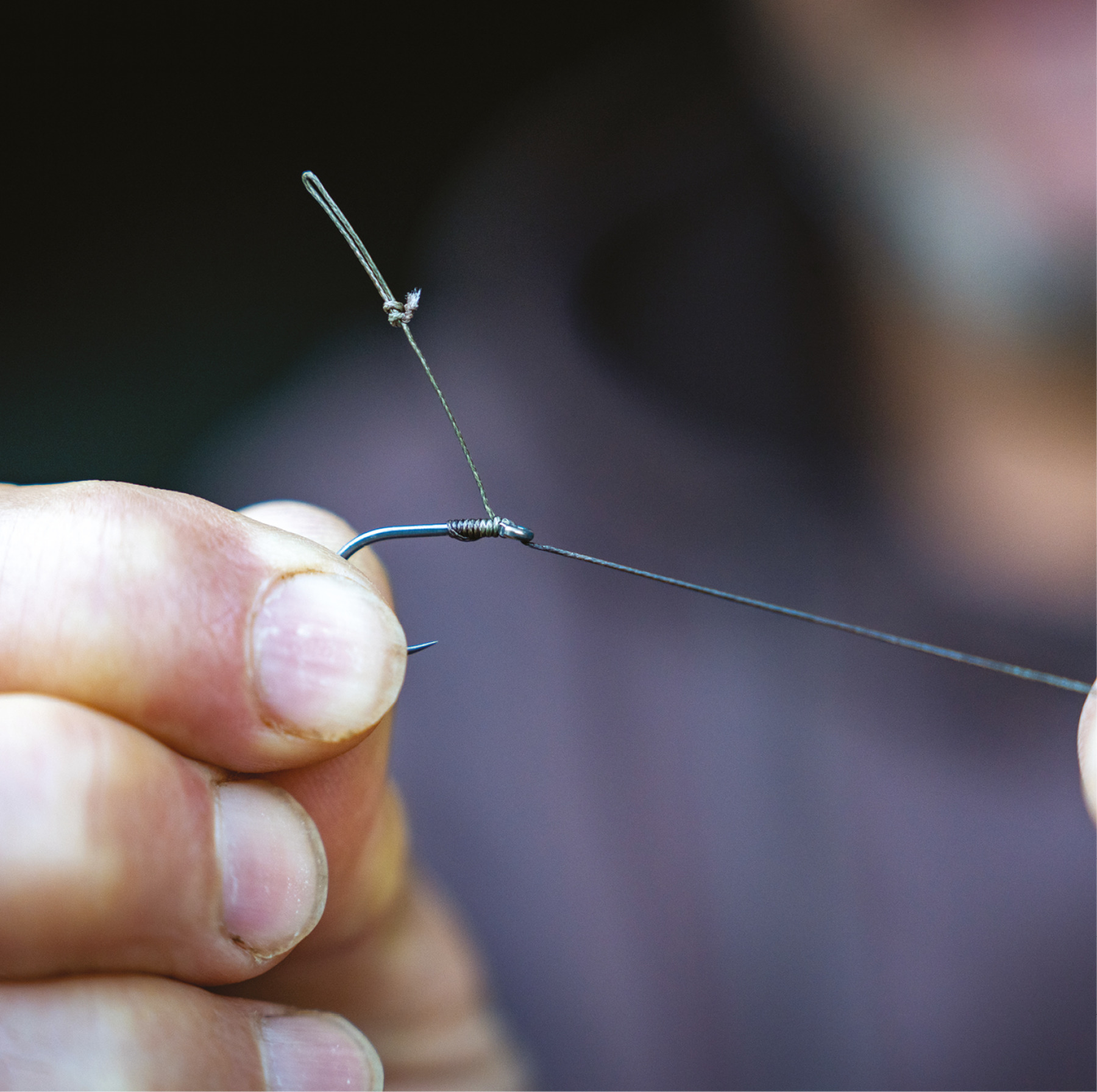
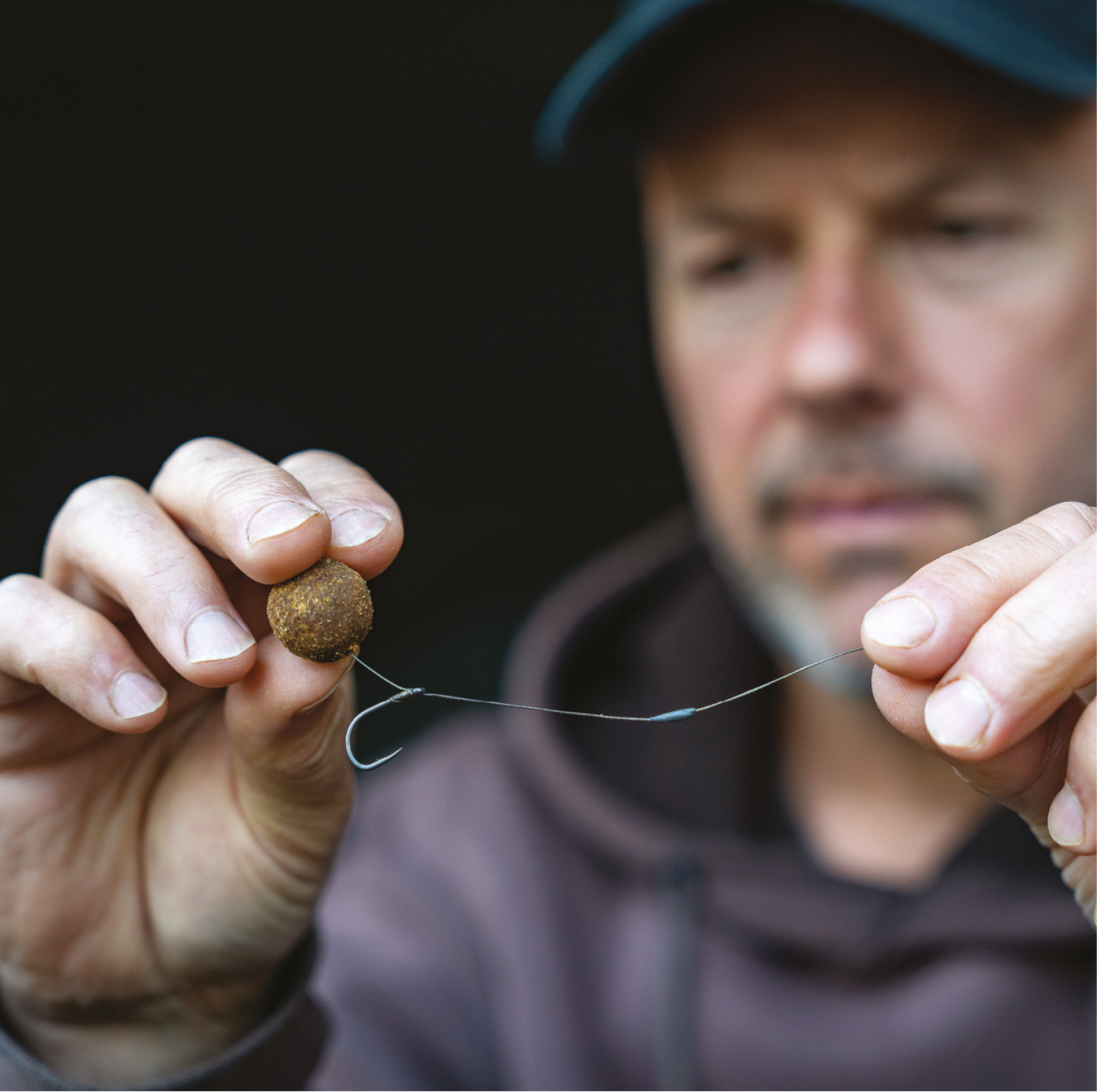
But why do you use such a simple rig with the stringer?
“The hooklink is made from a really soft-coated material so it’s fluid and will lay naturally on any lakebed, whereas with something like the Prong Rig, it could kick up. As I previously mentioned, I use the rig with a large, heavy hookbait and tie the Hair so it’s exiting very close to the eye (like it does on a KD Rig). This offers huge advantages but the Hair is prone to tangling on the cast—unless you combine it with the Bermuda Stringer! Thanks to its shape and because the hooklink is threaded through the middle of it, it’s impossible for the Hair to tangle. It’s also worth noting, I normally tie the rig really long—between 10- and 18-inches, but that does depend on the situation.”
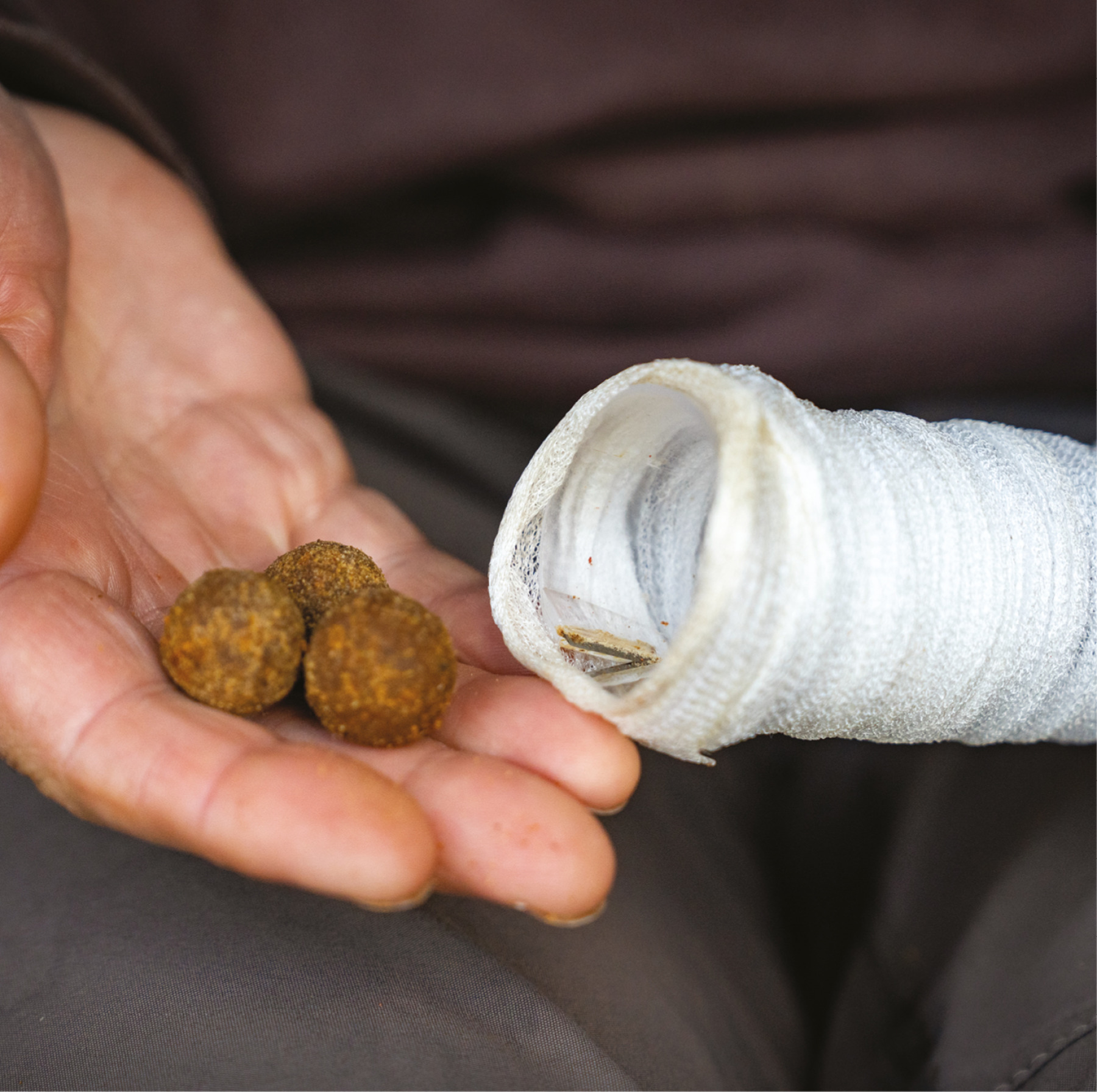
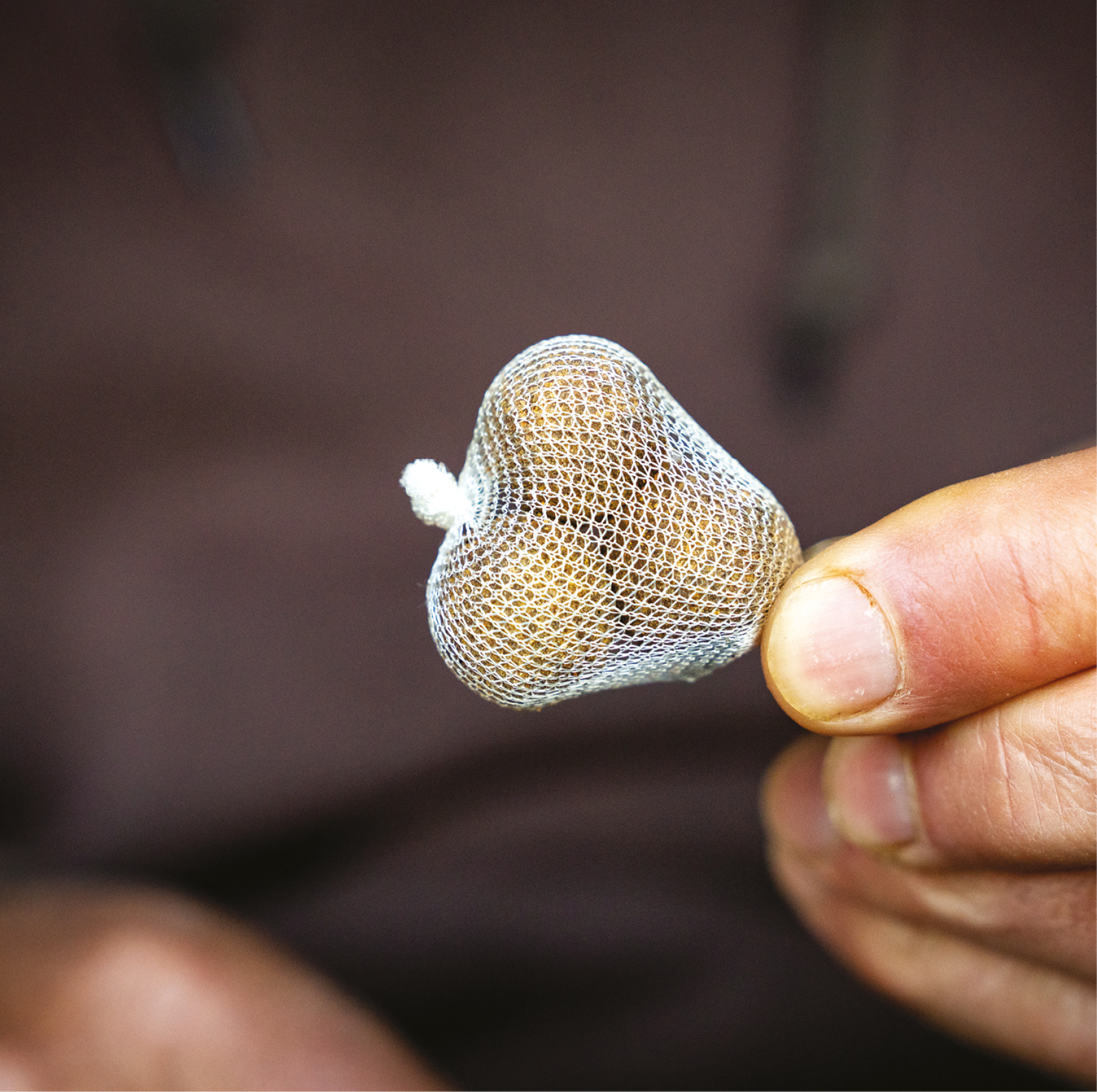
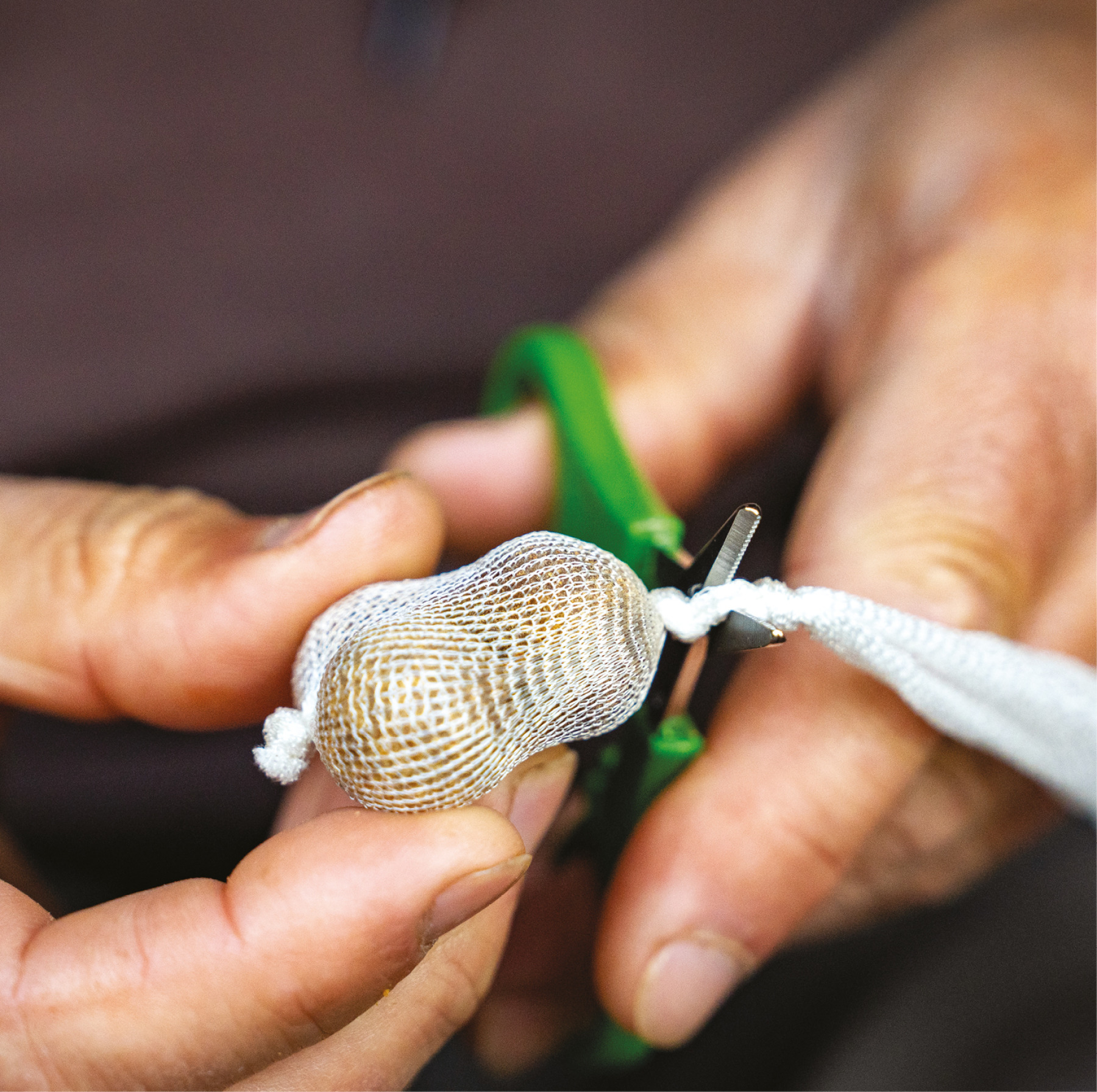
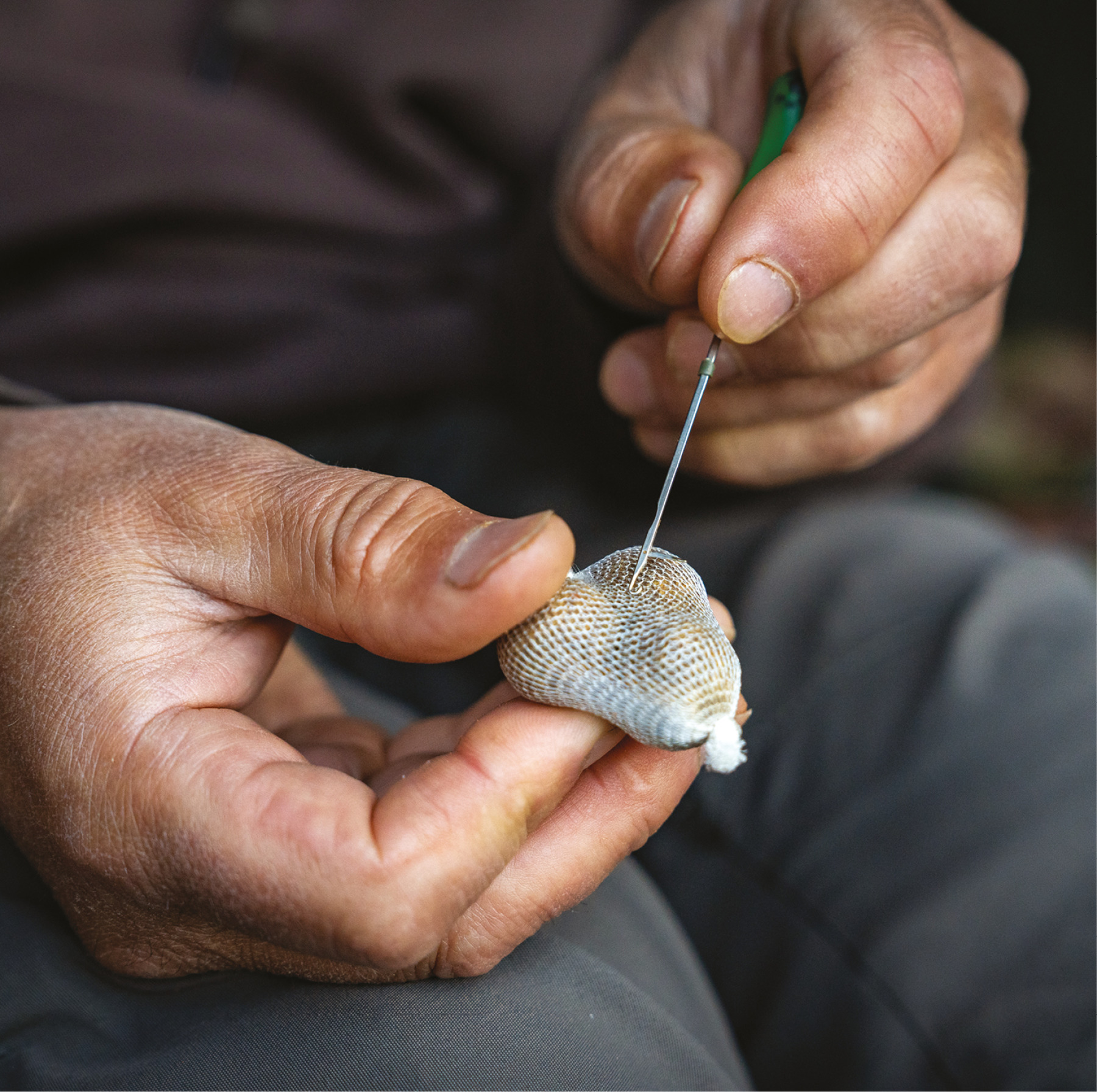
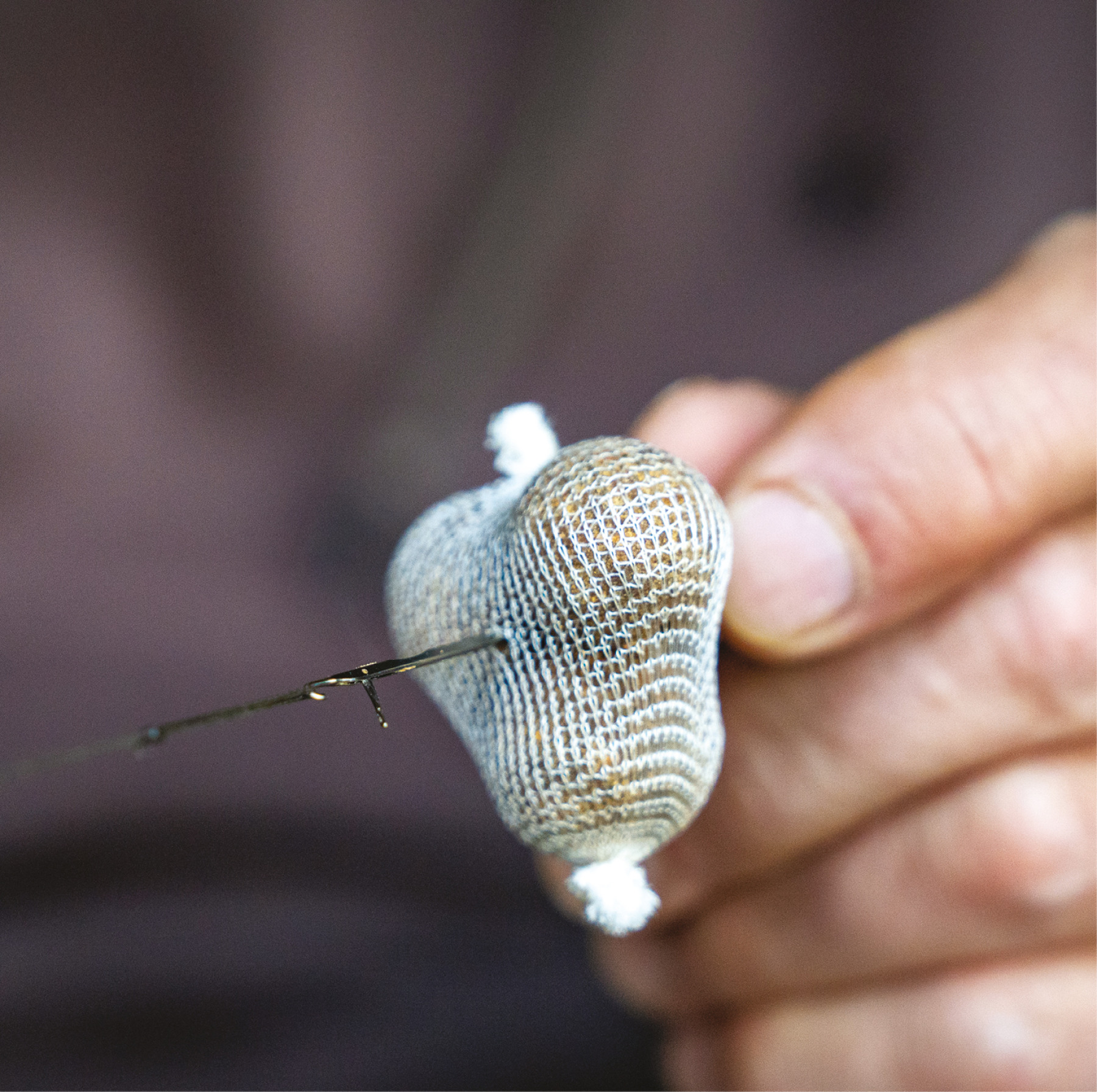
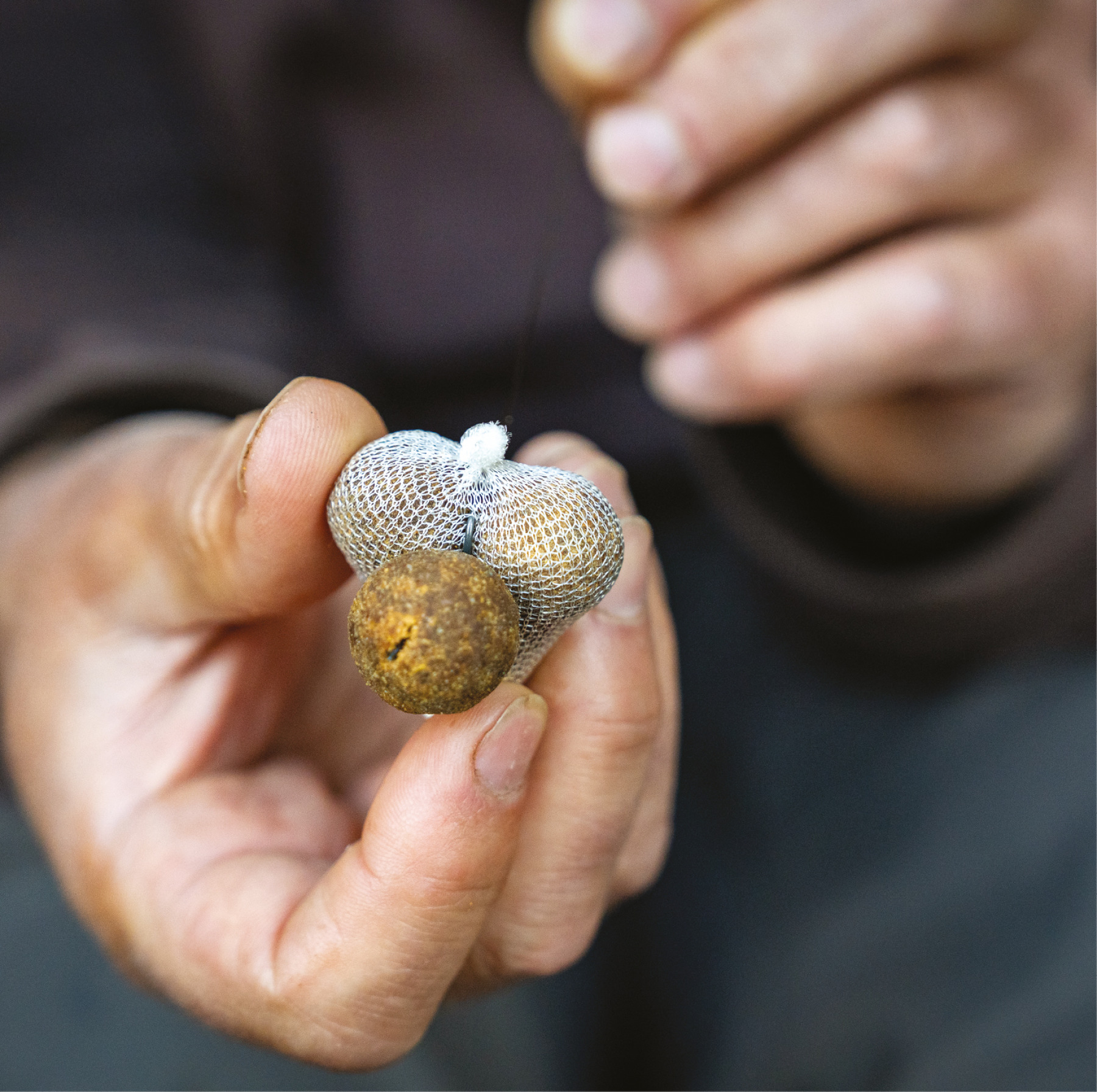
You switch between using PVA tape and funnel-web for making the stringer, but why is that?
“PVA tape is great for three seasons of the year, but during the summer months, when the water is a lot warmer and you’re fishing in anything over 12ft, then you’re asking a lot of a thin piece of PVA tape to get all the way down to the lakebed. Using the funnel-web, it slows the rate it dissolves, ensuring everything lands intact, regardless of how deep the water is.
“Irrelevant of which material I use, I always tie it in the same way—in a triangle shape—all tied nice and tight. It has to be a triangle so it sits perfectly over the hook. If you use more—four or five for example—then it won’t sit level, it’ll hang over to one side. Oh, and if you use funnel-web, then opt for the wide version, not the boilie-sized one.”
Finally, talk to us about paste…
“Very few people use paste, which when combined with the attraction it pumps out makes it a massive weapon. I honestly believe you’re better off having a tub of paste and a tub of Manilla Active Hookbaits than a bag full of different coloured hookbaits, glugs and bait sprays. Whilst the Active Hookbaits are already wrapped in their own paste shell, I will occasionally add an additional layer of paste.”
